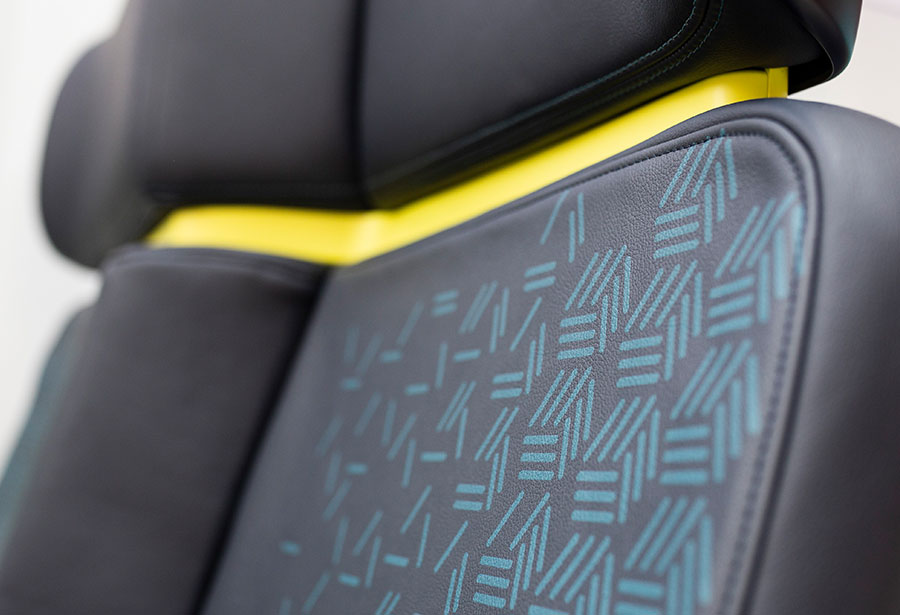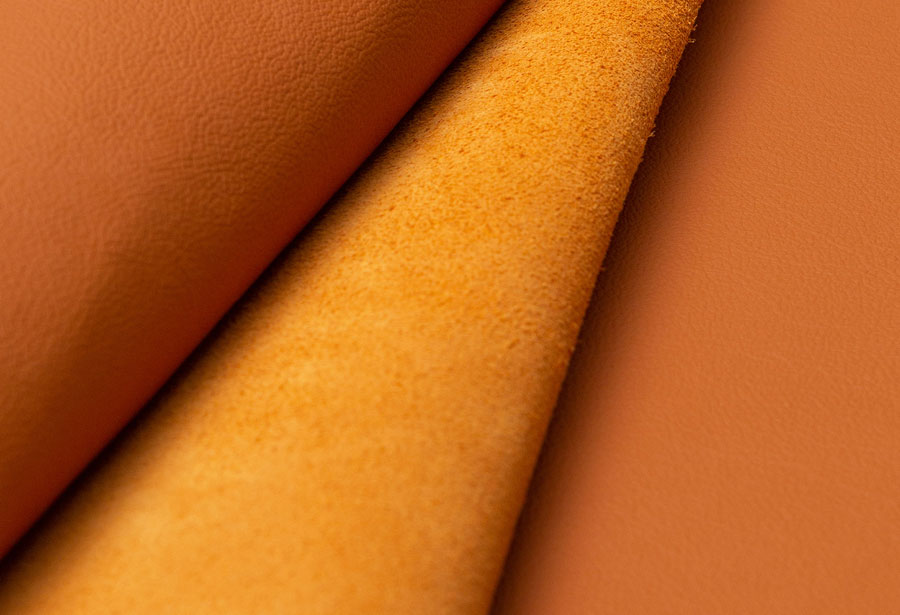Pioneering inclusive aircraft leather seat covers
Getting on a plane can evoke a flurry of emotions for anyone. The confined spaces, cacophony of noises, bright lights, and bustling crowds can easily overwhelm the senses.
But for neurodivergent individuals, including those with neurological or developmental disorders such as autism spectrum disorder, learning disabilities, or ADHD, the experience can prove especially stressful.
Many have heightened sensitivities compared to neurotypical travellers, which amplify the discomfort, turning what should be a pleasant flight into a draining ordeal.
With up to 80% of disabled individuals living with non-visible disabilities*, airlines are increasingly looking for ways to ensure the best possible onboard experience for all passengers.
Enter seat covers – the unsung heroes of inclusive aircraft interiors. While progressive cabin designs often feature adjustable lighting and other helpful amenities, the significance of seats in fostering an inclusive environment is frequently overlooked.
Driven by our desire to make a tangible difference, we are thrilled to unveil our pioneering vision for the world’s first neurodiverse-friendly aircraft leather seat covers.
Our new ‘Sensation’ collection, designed with neurodivergent adults in mind, seeks to inspire CMF designers as they envision the future of people-focused aircraft cabins.

The concept
We constantly seek inspiration from the world around us. Last year, our ReWILDing aviation leather collection drew from the natural world, underscoring Muirhead’s commitment to environmental sustainability. This year, we’re shining a spotlight on our social sustainability journey to showcase how leather design can redefine the onboard experience for all travellers.
The initial idea for this revolutionary concept arose from our conversations with neurodivergent adults who often face barriers while travelling.
We asked ourselves a simple, yet profound question: how can we, as trailblazers in high-performance aviation leather, make air travel as pleasant as possible for all passengers?
For us, the answer lies in multi-sensory design. This involves carefully curating and incorporating elements that provide passengers with comfort and a sense of security, empowering them to control their environment and better regulate their emotions onboard.

The process
The industry is already making strides towards accessible and inclusive cabin design. However, we recognise the need to veer away from approaches that are overly medicalised or infantilising towards adults with non-visible disabilities. Often, these initiatives are tailored for neurodivergent children, leaving adults feeling marginalised and ‘othered’.
The inclusive cabin of tomorrow must balance functionality with aesthetic appeal.
In this quest, genuine leather emerges as the perfect material. Leather seat covers convey a sense of luxury and sophistication that is far from infantilising.
Meanwhile, aviation leather has the advantage of being a natural material – something neurodivergent individuals often favour over synthetic alternatives as they offer a less invasive sensory experience.
To guide our design process, we worked closely with Scottish disability consultancy VIA (Visible Inclusive Accessibility), conducted extensive online research, and spoke directly with neurodivergent individuals who have faced difficulties while travelling.
Every story, every perspective helped us refine our approach, ensuring that our designs were not just visually captivating but also attuned to the needs of the community.
We conducted surveys to gain further insight into the aspects of cabin design that may be overwhelming for travellers with non-visible disabilities and gathered their views on existing approaches to inclusive cabin design.
The results
In the end, our Sensation design collection was born, providing inspiration for CMF designers across the aviation industry. The collection embodies our vision for the future of people-focused aircraft seat covers that truly cater for the needs of neurodivergent passengers.
The new collection features a soothing palette of greens, blues and neutrals, with green tones dominating to evoke a calming and tranquil ambience.
We wanted the collection to be as monochromatic as possible – a departure from the vibrancy of our other design concepts. With the colours being so close to one another, the collection showcases our in-house Colour Team’s exceptional colour-matching capabilities.
Harnessing Muirhead’s expertise in digital printing, our Sensation collection introduces a new dimension to seat covers, demonstrating how signage and patterns on leather seats could be used to help passengers locate their seats and process their environment ahead of the flight.
Meanwhile, we’re proud to be showcasing a variety of bespoke leather embosses as part of the collection, highlighting the importance of textures in curating a multi-sensory experience for neurodivergent travellers.

Looking ahead
Our pioneering Sensation collection marks just the beginning of a transformative journey towards inclusive aircraft leather seat covers.
In the years ahead, we’re hoping to see airlines and CMF designers pushing the boundaries of creativity, infusing their designs with functional yet visually appealing features to enhance the passenger experience.
These could include using digital printing or stitching around the perimeter of the seat to distinguish them from one another. For neurodivergent individuals, many of whom have other non-visible disabilities that prevent them from seeing between the seats, such innovations could offer a newfound sense of independence and ease.
Or imagine seatbacks adorned with large seat numbers, or essential safety instructions against a backdrop of luxurious natural leather, blending practicality with elegance. The possibilities are endless.
Visitors to booth 6E95 at this year’s Aircraft Interiors Expo (AIX) will have the opportunity to learn more about Sensation and experience Muirhead’s interactive sensory design studio, which offers attendees a respite from the bustling trade show environment.
* Source: Hidden Disabilities Sunflower Scheme and NHS (UK)


